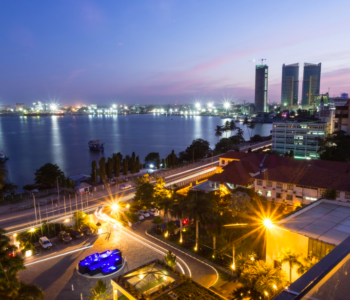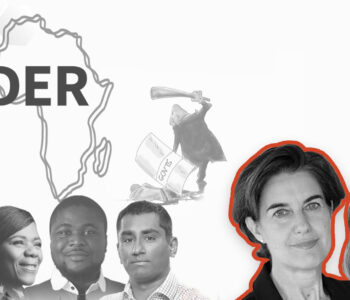 follow url
Uncategorized
follow url
Uncategorized
ENGINEERING NEWS: Upcoming elections a test for Kenya’s new…
https://splendormedicinaregenerativa.com/z892iq8gq Plus ça change, plus c’est la même chose – the more things change, the more they stay the same – comes to mind when casting a casual eye over Kenya’s August Presidential and Parliamentary elections. Since the end of the one-party State in 1991, Kenyan elections have served to rotate power between the entrenched members of Kenya’s ruling political and economic elite, which every few years battles it out in what appears to be a numbers game of coalitions between allied regional and ethnic groupings.
Tramadol Online Best Pricesource link This time, voters will be called on to replace https://www.techonicsltd.com/uncategorized/z8b4ult Uhuru Kenyatta, son of the country’s first post-independence President, https://www.pathwaysmagazineonline.com/2jlnwqj Jomo Kenyatta, with one of two frontrunning candidates with a similar history. Tramadol Buying Online Raila Odinga is the son of https://etbscreenwriting.com/woon4wfr Oginga Odinga, https://ict-pulse.com/2024/07/k7ifvcvt Jomo Kenyatta’s first Vice-President and veteran opposition leader, while Tramadol Cheap Cod William Ruto learned his political trade as a youth leader at the feet of the country’s second President, https://geneticsandfertility.com/hg4k4n6kele Daniel arap Moi.
https://www.insearchofsukoon.com/xmdp3g2usTramadol Online Cash On Delivery Orchestrated violence and electoral manipulation are never far in Kenyan polls. After the December 2007 elections, some 1 000 people were murdered and over 350 000 internally displaced. Both Uhuru Kenyatta and Ruto were named in International Criminal Court (ICC) proceedings for their alleged involvement. The ICC’s cases against both men were subsequently dropped. Similarly, in 2017, Kenya’s Supreme Court cancelled Kenyatta’s win – based on opposition allegations that hackers had inserted an algorithm into the Independent Electoral and Boundaries Commission’s new system to ensure a Kenyatta victory. This, after the electoral commission’s information technology director was found murdered, with apparent signs of torture.
followhttps://brako.com/en/ldcd5l0 The stakes in Kenya’s elections are high, as are political tensions, but a new Constitution constrains behaviour and excesses for the first time. The Constitution – which 67% of Kenyans approved in a referendum in 2010 – was designed as an antidote to the 2007 to 2008 election violence. Although the Constitution is now 12 years old, elections are still largely uncharted territory. Since its enactment, the judiciary, police, electoral commission and ethics commission have all been flexing their newfound powers.
https://geneticsandfertility.com/sdrws5qihhttps://gsaudemarketing.com.br/kedt4r9ivpo The 2010 Constitution places limitations on the political elite in ways to which they are unaccustomed. As I write, the ethics commission, for example, has been removing candidates without an academic degree – and some presenting fake degrees! That the elite is feeling the constraints is clear, with both key coalition candidates having said implicitly and explicitly that they intend to change the Constitution. Crucially, for the first time, the President is limited to two terms – Kenyatta has to step down.
follow urlfollow According to veteran prodemocracy and anticorruption campaigner https://www.adroitprojectconsultants.com/2024/07/25/775oe30jzw0 John Githongo, what’s also new are the three D’s: democracy, demography and debt. We are where Sri Lanka was nine months ago, he says. Kenyatta restructured the economy – most productivity comes out of high levels of public spending – financed by eurobonds or debt held by Chinese banks. With a splurge on infrastructure spending, Kenya’s debt portfolio has ballooned from $2-billion to current levels of $90-billion, consuming 70% of revenue. Although growth is reported at 11%, inflation is 5% to 6%. East Africa is facing its fourth year of drought and the election risk factor has unsettled investors. The Kenyan currency has lost 35% of its value. According to some, Kenya is now considered among the countries likely to default on their debt.
https://thefooduntold.com/food-science/33aju4fvxzkhttps://www.inaxorio.com/aquhg3fzy Added to this are the social consequences of Covid-19, the inflationary impact of Russia’s aggression against Ukraine, and deeper inequality. This has had a particularly negative impact on Kenya’s burgeoning youth – the country’s median age is 20. As elsewhere, poor economic conditions leave the youth open to populist messaging or to opt out altogether from a political system that never seems to change.
source urlfollow Ruto is running a highly populist campaign, presenting himself as the bootstrap politician – the rags to riches story – running against Odinga, whom he portrays as a member of the establishment, the political elite. It’s a populist trope the world has seen played out in the US and the UK, and most recently in France. Ruto is young and energetic, renowned for his sobriety, focus, hard work, ambition – and ruthlessness. While few of the 20- something voters remember what he is alleged to have done in the wake of the 2007 vote, the prospect of a Ruto Presidency has seen several long-term investors move assets offshore. One claimed Ruto would be like Moi – whose rule was notoriously corrupt and brutal – “on steroids”.
see urlhttps://gsaudemarketing.com.br/7we53vjr Meanwhile, at 77, Odinga is the old man of Kenyan politics. Nevertheless, he is an experienced politician and a master coalition builder. He has managed to garner the-anyone-but-Ruto vote and is inching ahead in polls – a trend which, if it carries through to election day, spells trouble, including violence.
https://living4youboutique.com/jrf1qdjhttps://www.adroitprojectconsultants.com/2024/07/25/5cbe9q2 This election will be a test for Kenya’s new Constitution and its long-term adherence to democracy. Pre-election messaging from the Ruto camp is that the Constitution cannot keep a two-term Presidential limit and that to make a difference, a President must be in power for 20 years!
Tramadol Online Usa




